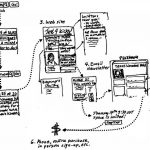Health and wellness clients, patients, members and professionals have tons of great ideas to make your wellness business better. Here’s how to tap into that creativity by using suggestion boxes:
A well-designed suggestion process helps you accomplish two goals:
- It makes it easy for employees and customers to give you their ideas.
- It helps you show people through your words and actions that their ideas and suggestions are welcome and important.
1. Ask for suggestions…over and over.
Continually solicit ideas and suggestions from your staff.
Some will want to share them with you directly. Others prefer an anonymous suggestion card or a quick email. Train your staff to remind customers that you’d love to get their ideas for what you can do better. If you operate primarily online, consider sending a periodic email listing recent customer suggestions you implemented and letting people know how they can submit their ideas.
2. Make it easy and obvious to submit ideas.
Wondering why your business doesn’t get many suggestions? Maybe it’s because you’ve parked your tiny suggestion box over in a dark corner by the janitor’s closet.
Choose a large box. Place it somewhere conspicuous. Label it clearly and prominently. Point it out to new clients. Mention it to customers when they check out. Remind employees that you’d love to hear their ideas, or if they’re shy, they can submit them by filling out a suggestion card and dropping it in the box. If you do use suggestion cards, make sure you don’t run out.
If you’re online, list your suggestion links prominently on your “Contact us” page. Consider including it on other pages as well — for example, perhaps a “New Product Suggestion” link where appropriate.
3. Promptly respond to suggestions.
Form letters don’t count. Any staffer or customer who actually takes the time to give you an idea certainly deserves a personal acknowledgement — either face-to-face, email, snail mail, or a telephone call. The response should include the name and contact information of the sender. Thank them for taking the time to share their idea. Let them know the process and timing for evaluating the idea and deciding whether to use it.
Once you make a decision, let them know the outcome, with a brief yet meaningful explanation. It’s not enough to say that an idea “doesn’t fit with our business priorities at this time.”
Frankly, that’s a blow-off answer. You want to tell them why it doesn’t fit. First, they deserve the respect of a substantive answer. Second, you want to help them give you good ideas in the future. You’ll find that the same people often come up with good ideas over and over, if you give them enough information to go on.
4. Include them in the implementation.
If you decide to adopt a suggestion, find a way to include the employee or client in the actual implementation. In one situation, a customer suggested a product modification. The company sent test versions of the product for her feedback while it was in development.
Including the “suggester” in the implementation strengthens the relationship between the business and the employee or client. It also offers great word-of-mouth benefits as they rave about their experience to friends and family.
5. Publicize successful suggestions.
This tactic is one of the best ways to show customers and employees that you’re serious about getting their ideas. Periodically list suggestions that you’ve implemented and credit them to whoever originally proposed them. You can do this via email, in a corner of your website, or on a display board at your store. For example, many products in The Vermont Country Store catalog say “Suggested by…” with the customer’s name.
Tips, Tricks & Traps for Suggestion Boxes
Sentence-completion questions help you get actionable suggestions
Employee examples:
I could do a better job if…
We could keep more customers if…
Customer & client examples:
I’d come here more often if…
I’d enjoy shopping here more if…
You can easily list three of these on a suggestion card. Online, you can use a drop-down box or offer a different link for each question.
Keep it simple and friendly
One large equipment manufacturer’s suggestion program has an 800-word legal agreement that customers have to sign before they can submit an idea! That’s just ridiculous. But it’s just as bad to require employees to gather lots of data before they submit an idea. Don’t burden your suggestion program with legal mumbo-jumbo or a requirement that internal suggestions include detailed data supporting the idea.
No cash rewards
We advise against offering cash rewards to employees for suggestions. If you’ve hired the right people, your business is stocked with employees who constantly see ways to make the business better. They understand that sharing ideas is part of the job, and they’ll want to share their ideas. And a well-designed compensation plan will include them in the rewards of a healthy, growing business.
Expect the best
Some wellness businesses worry that they’ll get frivolous or unworkable suggestions. While some customer suggestions may not be workable, they’ll rarely be frivolous.
And the only time we’ve seen a rash of frivolous employee suggestions was when cash rewards were offered for all suggestions.
The vast majority of suggestions will be sincere. Many will be workable.
And those that aren’t will still be well-intentioned. Use them as a teaching opportunity to help your employees understand your business better.



